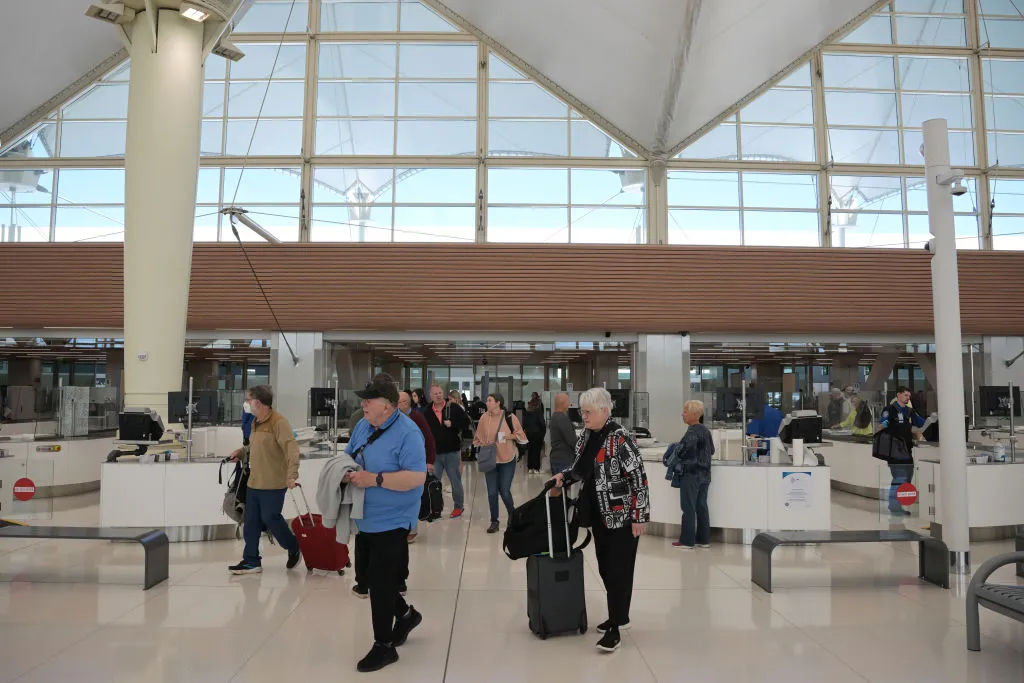
WASHINGTON — Democratic Rep. Raúl M. Grijalva, a champion of environmental protections and progressive ideals who took on principled but often futile causes during a two-decade career in Congress, died Thursday.
Grijalva, who was 77, had risen to chair the U.S. House Natural Resources Committee during his 12 terms representing southern Arizona, a powerful perch he used to shape the nation’s environmental policies. He was known for reliably going to bat for immigrants and Native American tribes, and for the bolo tie he wore at home in Tucson and in the Capitol in Washington.
[time-brightcove not-tgx=”true”]
Grijalva died of complications from cancer treatment, his office said in a statement. The treatments had sidelined him from Congress in recent months.
“From permanently protecting the Grand Canyon for future generations to strengthening the Affordable Care Act, his proudest moments in Congress have always been guided by community voices,” Grijalva’s office said.
Another Democratic House member, Rep. Sylvester Turner of Texas, died last week from health issues.
House Democratic leader Hakeem Jeffries said in a statement that Congress and the country had “lost a giant” with Grijalva’s death.
“Congressman Grijalva represented his community fiercely, keeping his constituents and the climate at the center of everything he did,” Jeffries added.
Dedicated to environmental causes
Grijalva, the son of a Mexican immigrant, was first elected to the House in 2002. Known as a liberal leader, he led the Congressional Progressive Caucus for a decade and dedicated much of his career to working on environmental causes.
He stepped down as the top Democrat on the Natural Resources committee earlier this year, after announcing that he planned to retire rather than run for reelection in 2026.
Grijalva announced nearly a year ago that he had been diagnosed with cancer, but would be able to continue his work. Despite missing hundreds of House votes, he sought reelection in 2024 and won easily in one of the most solidly Democratic districts in Arizona.
The seat, which represents a district spanning southern Arizona from Tucson to the border with Mexico, will remain vacant until a replacement is selected in a special election later this year.
The Democratic primary in the mostly Hispanic district is likely to be a fierce battle between allies of Grijalva, a longtime Southern Arizona power broker who led an influential bloc of progressive elected officials, and a more moderate faction. Possible contenders include his daughter, Adelita Grijalva, a member of the Pima County Board of Supervisors, and Tucson Major Regina Romero, one of Grijalva’s longtime allies.
Adelita Grijalva remembered her father Thursday as “the smartest person I’ll ever know—a fighter until the end.”
“He loved his family, especially those grandbabies, and this community,” she said on social media. “He as not a perfect person, but had perfect intentions and wanted to do good. It’s been my honor to be Raúl Grijalva’s daughter—a badge I wear with immense pride.”
Viewed as a role model
Democratic Sen. Ruben Gallego of Arizona, who served in the House until last year, said in a statement that “Congressman Grijalva was not just my colleague, but my friend.”
“As another Latino working in public service, I can say from experience that he served as a role model to many young people across the Grand Canyon State. He spent his life as a voice for equality,” Gallego added.
Sen. Bernie Sanders, an independent from Vermont, praised Grijalva as “one of the most progressive members” in the House.
“Raúl was a fighter for working families throughout his entire life. He will be sorely missed,” Sanders said in a statement.
Grijalva started out as a community organizer in Tucson and served on the local school board for years before being elected to the Pima County Board of Supervisors. He resigned from that post in 2002 to seek office in what was then Arizona’s newly created 7th Congressional District.
Grijalva prided himself on representing what he considered the underdogs, those without a voice.
Grijalva’s “kind and humble nature was known to many. He was approachable by all because he believed people should be treated as equals. He loved to give gifts, blare music in his office, and get to know people for who they are,” his office said in a statement.
He worked on issues that ranged from securing water supplies for drought-stricken parts of Arizona and the West to securing funding for the federal Land and Water Conservation Fund, which safeguards natural areas and provides recreation opportunities to the public.
He also played a key role in writing the National Landscape Conservation System Act and the Federal Lands Restoration Act, which were passed and signed by President Barack Obama.
In recent years, he also led advocacy in Congress for the creation of a new national monument near the Grand Canyon. It was part of an effort to protect the area from uranium mining and to acknowledge repeated calls by Native American tribes that sought to protect more of their ancestral homelands.
He also opposed plans to develop a major copper mine about 70 miles (112 kilometers) east of Phoenix.
Rep. David Schweikert, a Republican and fellow Arizonan, said on the social platform X that Grijalva “was always very kind to me—he had a great sense of humor. As a fellow animal lover, we often found ourselves working together on animal protection issues.”
Rep. Jesús G. “Chuy” Garcia of Illinois said Grijalva loved a line from the Spanish song “El Rey,” which translates to: “it’s not only about getting there first but about how you get there.”
“I think this phrase perfectly describes his tenacity in everything he did,” Garcia said.
—Associated Press writers Jonathan J. Cooper and Jacques Billeaud in Phoenix and Susan Montoya Bryan in Albuquerque, New Mexico, contributed to this report.






